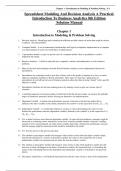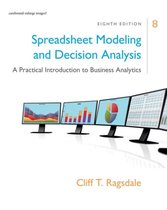Exam (elaborations)
Complete Solution Manual Spreadsheet Modeling And Decision Analysis A Practical Introduction To Business Analytics 8th Edition Questions & Answers with rationales (Chapter 1-15)
- Course
- Institution
- Book
Spreadsheet Modeling And Decision Analysis A Practical Introduction To Business Analytics 8th Edition Solution Manual Complete Solution Manual Spreadsheet Modeling And Decision Analysis A Practical Introduction To Business Analytics 8th Edition Questions & Answers with rationales (Chapter 1-15) ...
[Show more]





